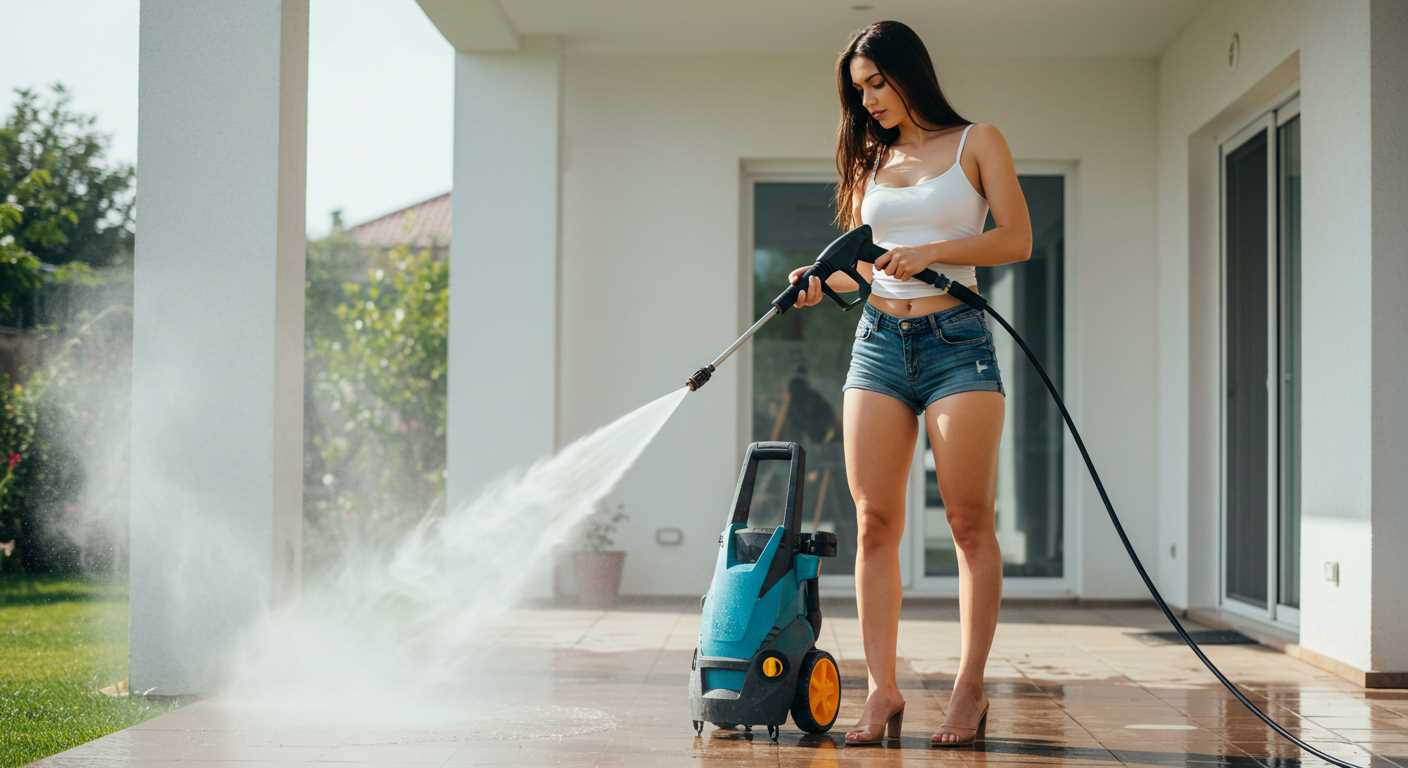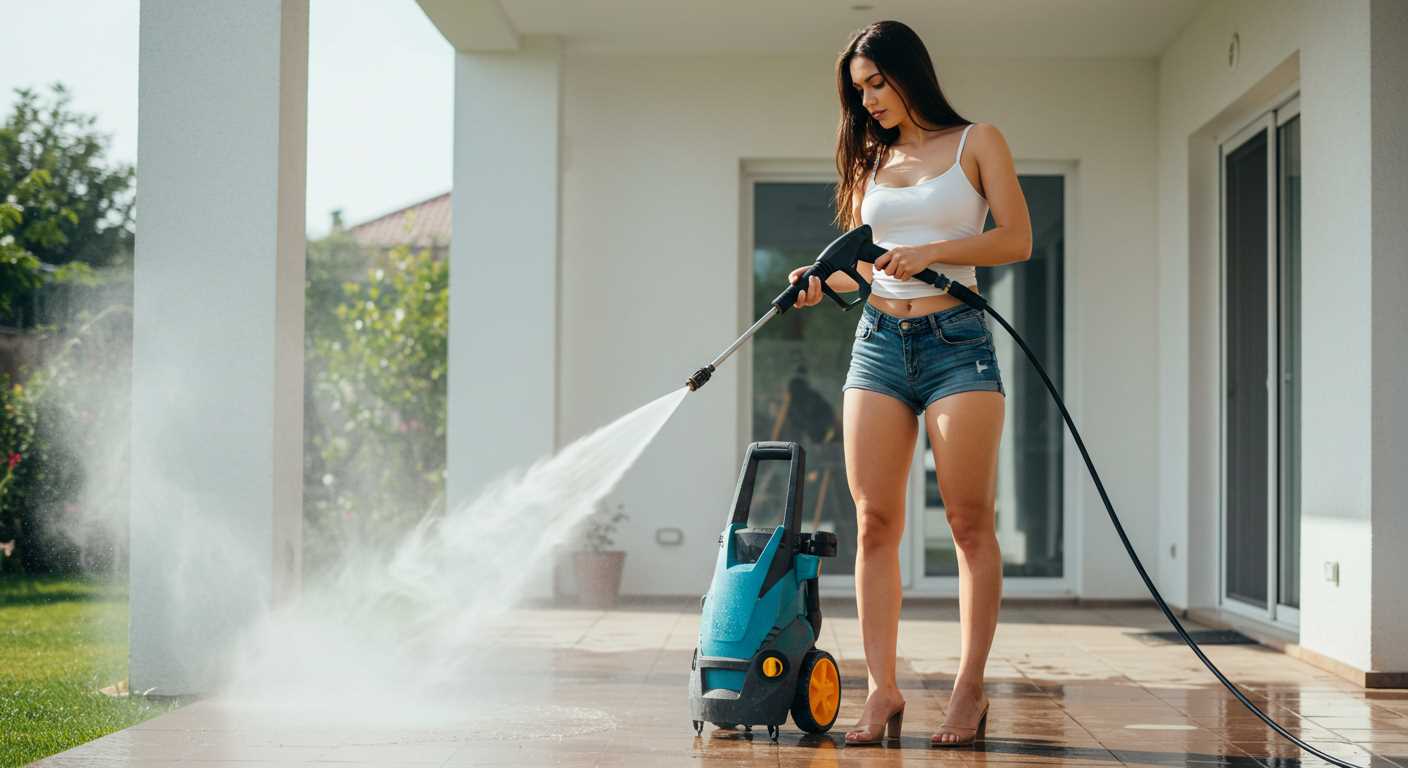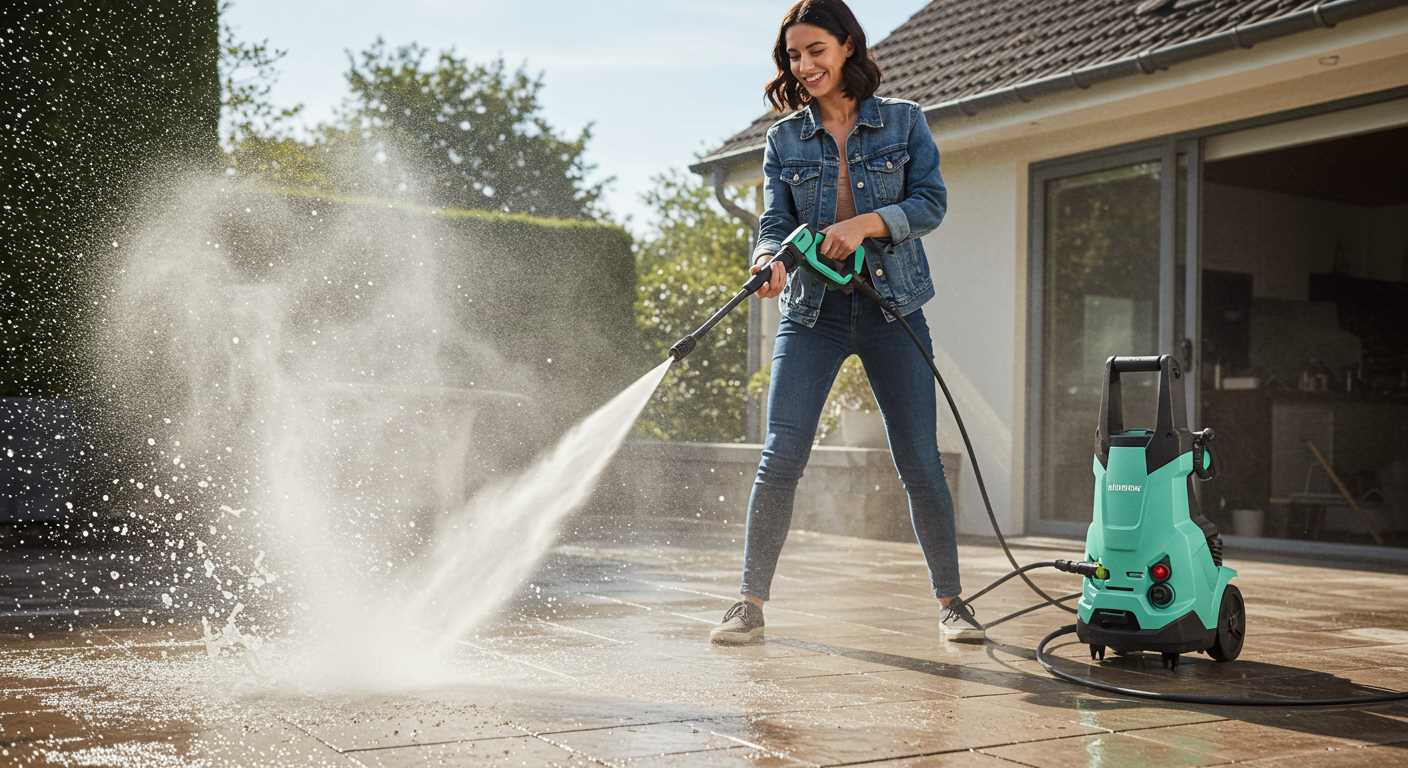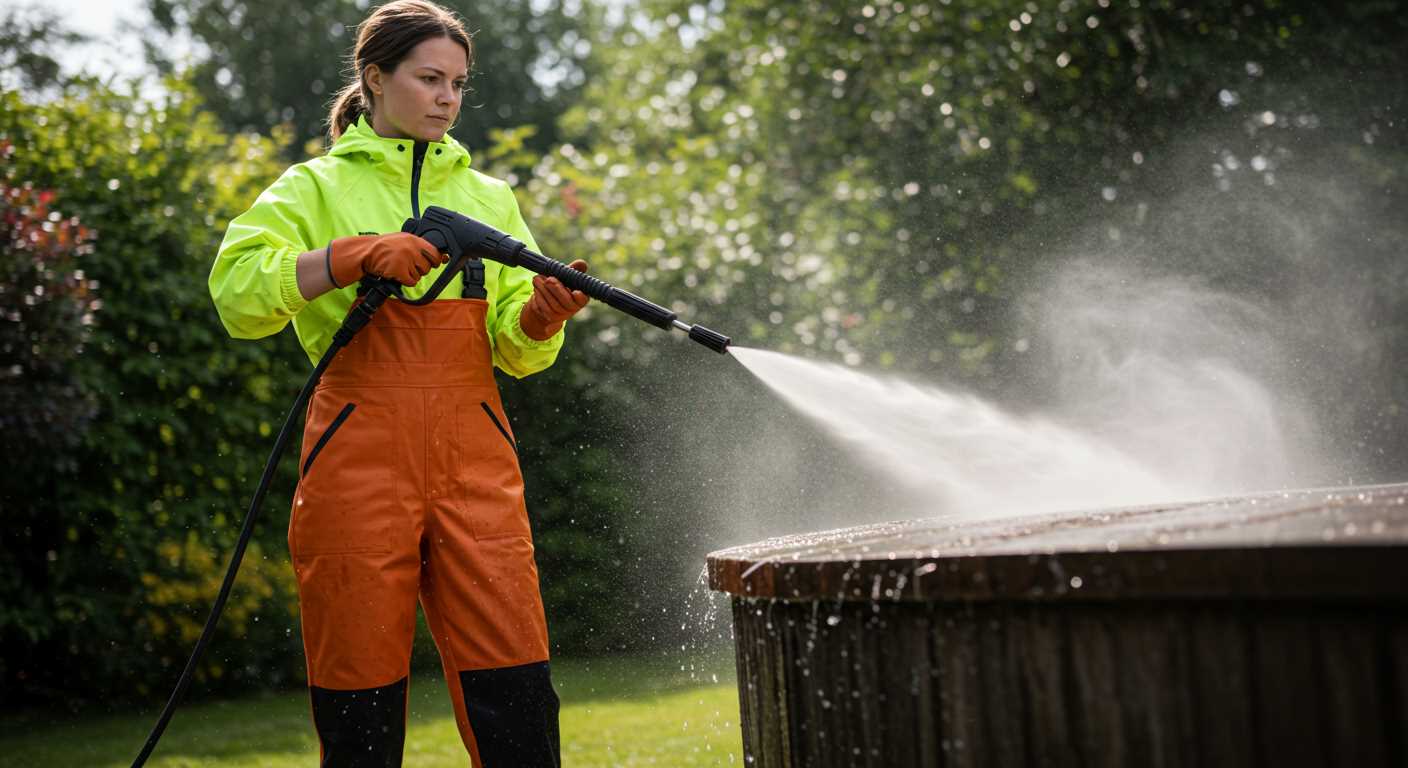




To get the most out of your high-pressure cleaning equipment, it’s crucial to grasp the mechanics behind the spray nozzle. The nozzle’s design plays a significant role in determining the force and pattern of the water being expelled. A narrow opening increases the speed of the water, creating a concentrated jet that can tackle stubborn grime, while a wider opening disperses the flow for broader cleaning coverage.
During my years in the cleaning equipment industry, I found that the adjustable nozzle is a game changer. By rotating the nozzle head, users can switch between different spray angles. For example, a 0-degree setting delivers a powerful, pinpoint jet ideal for removing tough stains, while a 40-degree setting offers a gentler spray for more delicate surfaces. Experimenting with these settings can save time and enhance efficiency on various cleaning tasks.
Another key element to consider is the pressure gauge. Understanding how to read this gauge allows you to adjust the water pressure according to the surface being cleaned. Too much pressure can damage softer materials, while too little may not effectively remove dirt. I recall a time when I was cleaning a wooden deck; using a lower pressure setting allowed me to clean without risking damage to the wood fibres.
Lastly, the connection between the nozzle and the hose is often overlooked. Ensuring a secure connection prevents leaks and optimises water flow. Regular checks and maintenance on this part of the equipment can significantly enhance performance and longevity. Trust me, a small investment in maintaining your equipment yields substantial returns in cleaning results.
Understanding the Components of a Pressure Washer Wand
To achieve optimal cleaning results, it’s vital to grasp the different parts of a cleaning tool’s extension. Each component plays a specific role in ensuring high performance, and knowing them can make your experience much smoother.
Trigger Mechanism
The trigger mechanism controls the flow of water. Pulling it releases high-pressure fluid, while releasing it stops the flow. I’ve had instances where a faulty trigger led to unnecessary leaks, so always check for smooth operation.
Spray Nozzles
Interchangeable nozzles significantly affect the cleaning process. Different angles and sizes offer varying spray patterns. For instance, using a 0-degree nozzle creates a concentrated stream ideal for tough stains, while a 40-degree nozzle is perfect for rinsing delicate surfaces. I often carry multiple nozzles to adapt to different cleaning tasks.
Additionally, some models include rotating nozzles, which provide a wider coverage area by spinning the water jet. This feature can cut down cleaning time, as I discovered during a recent project on a large driveway.
Understanding these elements can elevate your cleaning game, making tasks easier and more efficient. Regular maintenance of the wand itself, such as checking for clogs or leaks, will also enhance durability and performance.
Water Pressure’s Impact on Cleaning Power
To maximise cleaning results, it’s crucial to choose the right water pressure. Higher levels typically enhance the ability to remove stubborn dirt and grime, but they can also risk damaging delicate surfaces. Here’s how to strike the right balance.
Optimal Levels for Different Surfaces
- Concrete: A level of 2500-3000 PSI works well for driveways and patios, efficiently lifting built-up stains.
- Wood: For decks and fences, aim for 1200-1500 PSI to prevent splintering while still ensuring a thorough clean.
- Vehicles: Stick to 1200-1900 PSI to avoid damaging paintwork while effectively removing dirt.
- Vinyl Siding: A moderate 1300-1600 PSI is ideal, as it cleans effectively without causing harm.
Understanding Flow Rate
Alongside pressure, flow rate plays a pivotal role. Measured in gallons per minute (GPM), higher flow rates allow for quicker cleaning, as more water can carry away dirt and debris. A combination of sufficient pressure and flow rate can drastically improve results.
- For heavy-duty tasks, look for units with 2.5-4 GPM.
- For lighter tasks, 1.5-2 GPM suffices.
From my experience, selecting a machine with adjustable settings makes a significant difference. It allows for fine-tuning based on the surface and type of dirt. I vividly recall a project involving an old wooden deck; starting with too high a level nearly ruined the surface until I dialled it down. This flexibility can prevent costly mistakes and ensure a job well done.
Ultimately, understanding the relationship between water pressure and cleaning efficiency is key. Make informed choices, and you’ll achieve superior results while safeguarding your surfaces.
Types of Nozzles and Their Specific Functions
Choosing the right nozzle can significantly impact your cleaning tasks. From my experience, the nozzle you select determines not just the intensity of the water stream but also the types of surfaces you can effectively clean.
Fan Nozzles
Fan nozzles are typically colour-coded, with each colour representing a different spray angle. A 0-degree nozzle delivers a concentrated, powerful stream ideal for tough stains on concrete or brick. Conversely, a 40-degree nozzle produces a wide fan spray, perfect for rinsing surfaces or cleaning delicate materials like wood. Remember, using the correct angle can prevent damage to softer surfaces.
Rotary Nozzles
Rotary nozzles combine the power of a pinpoint stream with a rotating action, creating a circular spray pattern. They are excellent for stubborn grime and dirt on hard surfaces. In my experience, they cut cleaning time in half when tackling driveways or patios. However, caution is necessary, as they can easily strip paint or damage softer materials.
Choosing the right nozzle not only enhances cleaning efficiency but also protects surfaces from potential harm. Each type serves a distinct purpose, and knowing when to use them can make all the difference in your cleaning regimen.
The Role of the Trigger Mechanism in Operation
The trigger mechanism is the heart of any high-powered cleaning tool, allowing precise control over the flow of water. When I first started in the cleaning equipment industry, I quickly realised how vital this component is for both performance and user comfort. A well-designed trigger ensures that you can manage the intensity of the stream, conserving resources while effectively tackling dirt and grime.
Precision Control and User Comfort
Engaging and disengaging the trigger should be intuitive; a stiff or poorly designed trigger can lead to operator fatigue. I recall a project where I tested various models, and it became apparent that those with ergonomic triggers significantly reduced strain during prolonged use. This small detail can make a substantial difference, especially for professionals who rely on these tools daily.
Safety Features
Modern trigger mechanisms often incorporate safety locks to prevent accidental activation. I’ve seen firsthand the importance of this feature, particularly when working in unpredictable environments. A lock not only safeguards against unintentional sprays but also extends the lifespan of the equipment by preventing wear and tear on the internal components.
| Feature | Importance |
|---|---|
| Ergonomic Design | Reduces user fatigue during extended use |
| Safety Lock | Prevents accidental activation and enhances safety |
| Responsive Action | Allows for immediate control over water flow |
In my experience, investing in a unit with a superior trigger mechanism not only enhances cleaning efficiency but also elevates the overall user experience. It’s one of those aspects that might seem minor at first glance but can greatly impact performance and satisfaction in the long run.
Adjusting Spray Patterns for Different Surfaces
For optimal results, adjusting the spray pattern is crucial. On concrete, I often use a narrow jet to tackle stubborn stains. The concentrated force effectively removes oil and grime without damaging the surface. I recall a particularly challenging driveway that required a 15-degree nozzle; the difference was remarkable.
For softer surfaces like wood decking, a wider fan pattern is preferable. It distributes the water flow more gently, preventing splintering while still offering thorough cleaning. I’ve had clients who were hesitant to clean their decks due to fear of damage, but switching to a 25-degree nozzle made a world of difference, restoring their wood without causing harm.
When it comes to vehicles, I recommend a 40-degree spray. This setting is gentle enough to protect paintwork while effectively removing dirt and debris. I’ve often told friends to start from the top and work down, allowing the water to carry dirt away, which makes the task much easier and prevents streaking.
For heavily soiled areas, a rotating nozzle can be beneficial. This attachment combines the power of a narrow stream with the coverage of a wider pattern. I remember using one on a commercial building façade; the results were astonishing, cutting cleaning time in half.
Always test the spray pattern on a small, inconspicuous area first. This precaution helps gauge the effect on different materials, ensuring no unintended damage occurs. Adapting your approach based on the surface can save time and enhance cleaning efficiency significantly.
Maintaining and Cleaning Your Pressure Cleaning Tool
Regular upkeep is vital for longevity. After each use, disconnect from the water source and power. This simple step prevents wear and tear on the connections.
Daily Care Routine
- Inspect for leaks: Check hoses and connections for any signs of wear or damage.
- Flush the nozzle: Run clean water through the nozzle to remove any debris that could clog it.
- Wipe the exterior: A damp cloth can keep the exterior clean and free from dirt accumulation.
Periodic Deep Cleaning
- Disassemble components: Periodically take apart the nozzle and trigger mechanism for a thorough inspection.
- Soak in warm water: Use a mild detergent to soak parts, loosening any stubborn grime.
- Rinse thoroughly: Ensure all detergent is removed to prevent residue build-up.
Never use abrasive cleaners as they can scratch surfaces and degrade materials. After cleaning, apply a light coat of lubricant to moving parts, ensuring smooth operation.
Store the tool in a dry place, ideally in a protective case, to shield it from dust and moisture. Regularly following these steps will keep your cleaning device performing optimally for years to come.
Troubleshooting Common Issues with Pressure Cleaning Tools
When your cleaning tool isn’t performing as expected, start by checking the water source. Ensure that the hose is connected securely and there are no kinks obstructing flow. A lack of water can lead to poor performance. I once faced a situation where I was convinced the equipment was malfunctioning, only to find the water supply had been turned off. It’s often the simplest things that trip us up.
Low Pressure Problems
.jpg)
Low pressure can be incredibly frustrating. First, inspect the nozzle for clogs. A blocked nozzle can restrict water flow significantly. I’ve often found that even a small piece of debris can cause major issues. Remove the nozzle and rinse it under running water. If the problem persists, check the hose for leaks or damage. A leak can sap the strength of your flow, rendering your efforts ineffective.
Trigger Mechanism Malfunctions
If the trigger is unresponsive or stuck, first make sure there isn’t any debris lodged in the mechanism. Cleaning this area can often resolve the issue. If it’s still not functioning, consider applying a silicone lubricant to the trigger. In my experience, a simple lubricant application can breathe new life into a worn-out trigger. If all else fails, it may be time to consult your user manual for specific troubleshooting steps or replacement options.
For those who enjoy capturing the results of their cleaning efforts, a digital camera come with picture fix can be a handy tool to document before and after shots. Keeping a record not only showcases your work but also highlights the effectiveness of your cleaning equipment.
Choosing the Right Wand for Your Pressure Washer
For optimal performance, selecting the appropriate attachment for your cleaning tool is critical. I remember the first time I upgraded my equipment; I underestimated how much a well-suited accessory could impact my cleaning results. When choosing, consider the length and material of the rod. A longer rod can help you reach high areas without a ladder, while lightweight materials reduce fatigue during prolonged use.
Another aspect to examine is compatibility with nozzles. Not all attachments work seamlessly with every type of nozzle available. Ensure that the attachment you choose accommodates the specific nozzles you plan to use, whether it be a rotating, fan, or turbo nozzle. This compatibility can significantly enhance your cleaning efficiency.
Also, think about the type of projects you’ll typically undertake. For heavy-duty tasks, a more robust attachment with a metal construction can withstand the rigours of tough environments. Conversely, for light cleaning chores, a plastic option may suffice. I’ve found that investing in a durable model pays off in the long run, saving you money and hassle from frequent replacements.
Don’t overlook the importance of the trigger mechanism. A smooth-action trigger can make a significant difference in comfort and control. After testing various models, I’ve discovered that a well-designed trigger reduces strain on your hands and allows for more precise control over the water flow.
Lastly, consider your water source. If you need to extend your reach, a quality garden water hose for pressure washer can be a worthwhile investment. Make sure it’s compatible with your chosen attachment to avoid any leaks or inefficiencies during use.
By taking these factors into account, you’ll not only enhance your cleaning experience but also achieve better results on every project.
FAQ:
What are the main components of a pressure washer wand?
A pressure washer wand typically consists of several key components. Firstly, there is the handle, which allows the user to control the wand and direct the spray. Attached to the handle is a trigger mechanism that controls the flow of water. The wand itself is often made of durable materials like stainless steel or plastic, designed to withstand high pressure. Additionally, there may be interchangeable nozzles at the end of the wand that alter the spray pattern, allowing for various cleaning tasks. Some wands also feature extensions for reaching high or difficult areas.
How does the pressure washer wand create high pressure?
The high pressure generated by a pressure washer wand comes from the machine’s pump. When water flows into the pump, it gets compressed by the motor-driven mechanism. This compression raises the water pressure significantly, often reaching levels between 1000 to 4000 PSI (pounds per square inch). When the user pulls the trigger on the wand, the pressurised water is released through the nozzle, creating a powerful jet that can effectively remove dirt, grime, and stains from various surfaces. The nozzle type can further influence the pressure and spray pattern.
Can I use different nozzles with my pressure washer wand?
Yes, pressure washer wands are designed to accommodate different nozzles, which can be easily swapped out depending on the cleaning task at hand. Common nozzle types include 0-degree, 15-degree, 25-degree, and 40-degree, with each providing a different spray angle and intensity. A 0-degree nozzle delivers a concentrated jet of water, ideal for tough stains, while a 40-degree nozzle disperses water more widely, making it suitable for gentle cleaning. Always ensure that the nozzle you choose is compatible with your specific pressure washer model for optimum performance.
What safety precautions should I take when using a pressure washer wand?
When using a pressure washer wand, safety is paramount. Firstly, always wear protective gear, including goggles and gloves, to shield yourself from debris and high-pressure water. Ensure the area is clear of people and pets before starting. Familiarise yourself with the machine’s instructions, particularly regarding the proper handling of the wand and nozzle. Avoid directing the spray at yourself or others, as the high pressure can cause serious injury. Additionally, be cautious of slippery surfaces created by the water, and always maintain a firm grip on the wand to prevent accidental slips.








.jpg)


